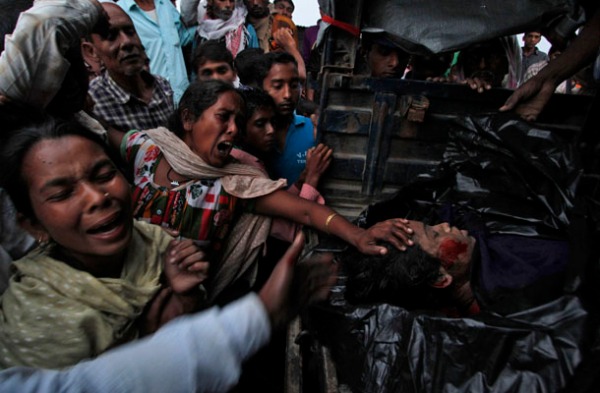
Al Qaeda recently announced that they shall be creating a new branch of their franchise for the Indian Subcontinent. The countries that will be targeted by this new branch include India, Bangladesh, and Myanmar. The new head of this organization is Umar Asim, a commander of the Pakistani Taliban. AQIS (Al Qaeda in the Indian subcontinent (Arabic: جماعة قاعدة الجهاد في شبة القارة الهندية) literally Group (or Organization) of the base for Jihad in the Indian Subcontinent), according to Zarawahiri, is to essentially ‘liberate’ the Muslims in the aforementioned areas from injustice and oppression. By Zawahiri’s account, this new extension has been in the works for the last two years. Whether this is true or not, the formation of this group cannot be viewed in isolation.
The timing of this new branch, like most commentators have already discussed, is coming in a period where Al Qaeda has suffered a loss in credibility and prestige with the recent success of ISIS in the Middle East. Not only has ISIS controlled such a large area (along with governing it), it has also successfully held off Al Qaeda’s local franchise (Jabhat Al Nusra) as well as the Assad government. Indeed, with the death of Osama Bin Laden (a charismatic speaker) and its weakening franchises (like Al Shabaab), and other franchises declaring loyalty to ISIS (like AQAP), AQ needs a booster.
So what can Al Qaeda do? They focus on the one region where ISIS does not have strong connections. South Asia has a long history of jihadi terrorism as well as several issues that can appeal to Muslims in the subcontinent (like the fear of Buddhist and Hindu extremists). There is a fear that ISIS will make inroads into South Asia. ISIS pamphlets have already been seen distributed in Pakistan, has attracted some Indians to come fight (a rare thing as I briefly discussed here), and has proliferated multiple recruitment videos in South Asian languages, AQ has a real fear that ISIS will overtake them in a region where they currently have the advantage.
Yet AQIS is a threat to the subcontinent. Both India and Bangladesh are relatively weak states (in the sense they cannot properly implement the rule of law in all areas they control (more discussion about this in a future post)) that already have to worry about a well-established terrorist network in South Asia (established by groups like Lashkar-e-Taiba). There have also been indications that the fighters for the Indian Mujahideen have started to align themselves with Al Qaeda (thanks to the leadership of the organization having been captured). Although AQIS might not become the most powerful group in South Asia (an unfortunate honor that can arguably be given to LeT), it could gain the operational capability to threaten the region in the near future. Indeed, both the Indian and Bangladeshi governments have stated that they are taking the issue seriously.
But the importance of India to jihadis is often overstated. Although Bin Laden and other Al Qaeda members made reference to India as a potential target (the Zionist-Crusader-Hindu alliance), it was actually never a serious threat. The previous mentions of India or Kashmir had usually been minor, especially compared to their statements against the United States. Even in the first instance Bin Laden mentioned the Zionist-Crusader-Hindu alliance, the country of Sudan was mentioned and criticized more than Hindus, India or Kashmir. Even in the ideology of many transnational jihadist groups (most based in the Middle East), the focus has been on America and Israel, as well as the so called secular Arab regimes. In fact, the addition of Hindu to the alliance was done by Pakistani groups like Lashkar-e-Taiba in order to try to integrate their objectives with the global jihadi movement. Indeed, LeT has aided Al Qaeda while it has been stationed in Pakistan, although LeT has enough power and its own objectives to be independent from the infamous terrorist organization. With the organization suffering a loss in prestige, it will attempt to try and appeal to Muslims in areas that ISIS has little to no influence. As a result, it would not be surprising if Al Qaeda will continue to integrate its ideology more with the current Pakistani jihadist beliefs.
It will take some time to see whether this group will turn out to be a serious threat or not. Although some Indian commentators have insinuated that China and Pakistan will support this group (both directly and indirectly), this is also unlikely. Other authors have accused the ISI of supporting Al Qaeda, but much of this is based on circumstantial evidence. It is also very unlikely that China would support an Islamist group against India that could possibly turn to the Uighur problem next.
At this time, not enough information has been released about the group to get a clearer picture of this organization. As time goes on, we will become more acquainted with this new branch, although we should really hope not.




